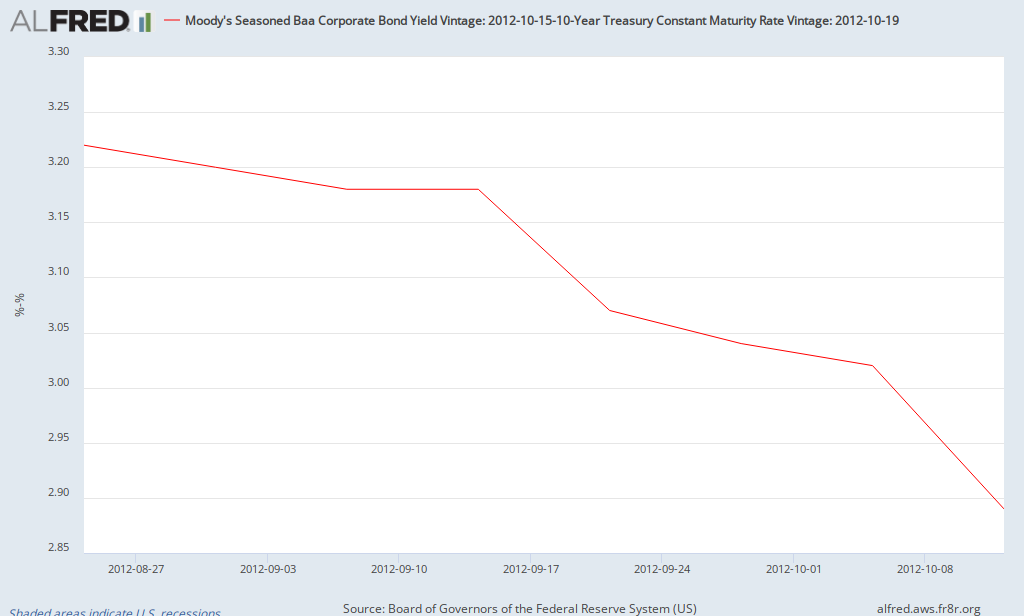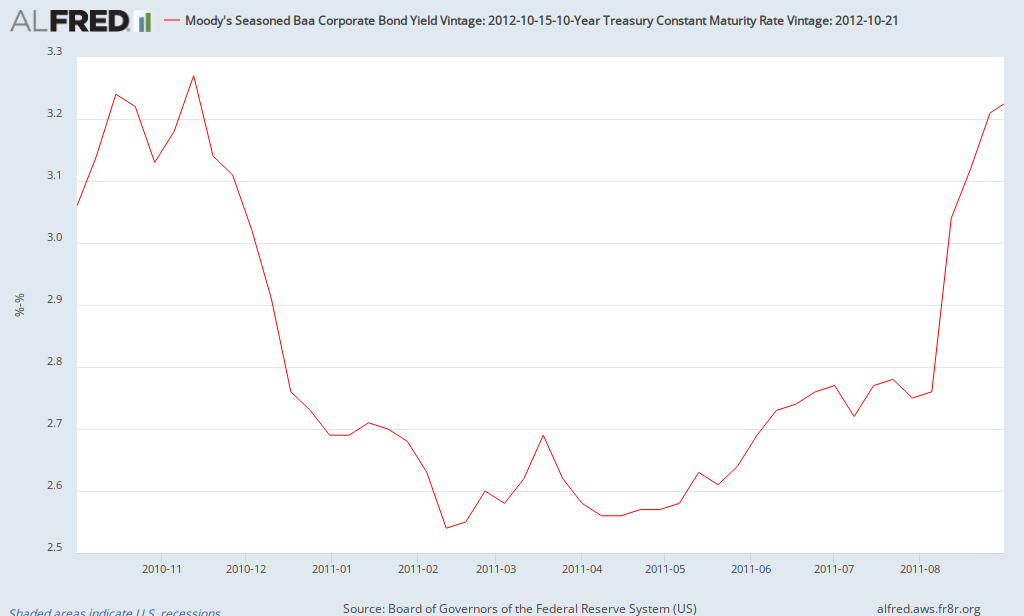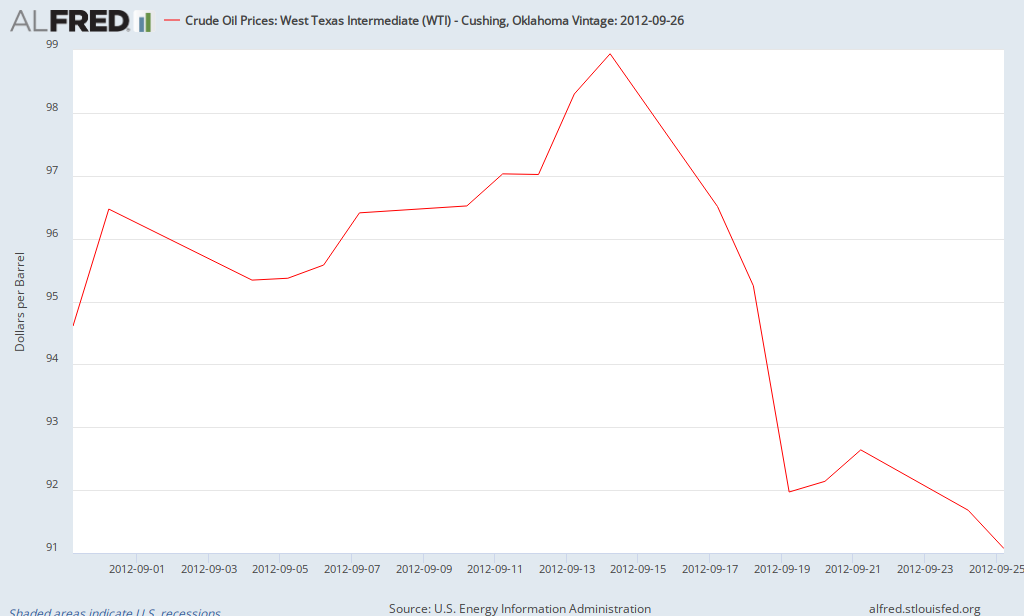As we get closer to the fiscal cliff, I thought it would be helpful to consider different ways that the government can reduce future deficits and debt. Here are some numbers that I shared with my classes a few weeks ago. As noted, this is not my proposal (though I support some of the items). Instead, it provides some context for what needs to be done to contain the national debt. All numbers reflect 10-year esimates by the Congressional Budget Office.
| Program | 10-year savings |
| change the cost-of-living adjustment for government pensions (including military) | $24 billion |
| change the cost-of-living adjustment for Social Security | $112 billion |
| raise age for Medicare eligibility to coincide with Social Security | $125 billion |
| raise the early retirement age for Social Security (full retirement is being raised by 2 years, this would raise early retirement also by 2 years; phased in over time) | $144 billion |
| reduce the growth rate of non-defense discretionary spending by 1% annually | $327 billion |
| reduce the growth rate of defense spending by 1% annually | $286 billion |
| cap tax deductions at $50,000 | $749 billion |
| raise top tax rate by 1% | $84 billion |
| change the inflation rate used for indexing various parts of the tax code | $72 billion |
| raise gas tax by 10 cents per gallon | $175 billion |
| total (not including savings on interest) | $2.1 trillion |








